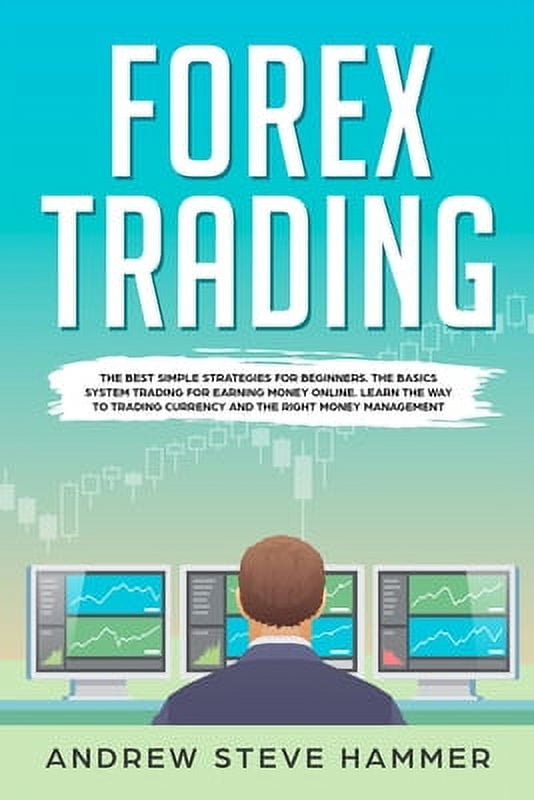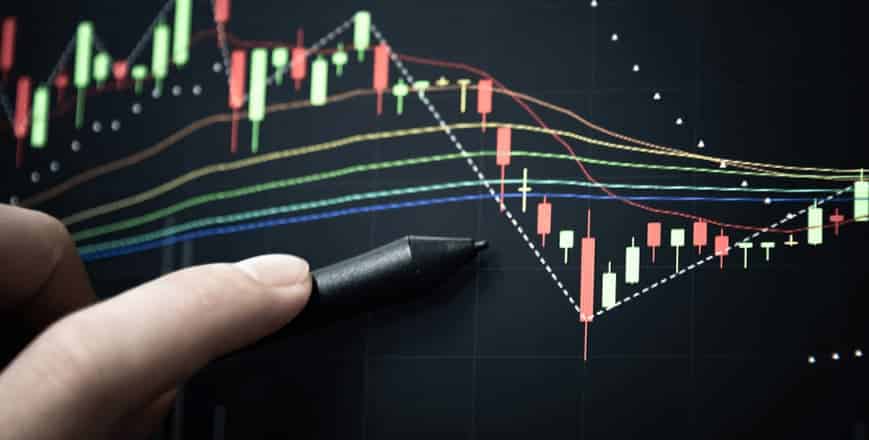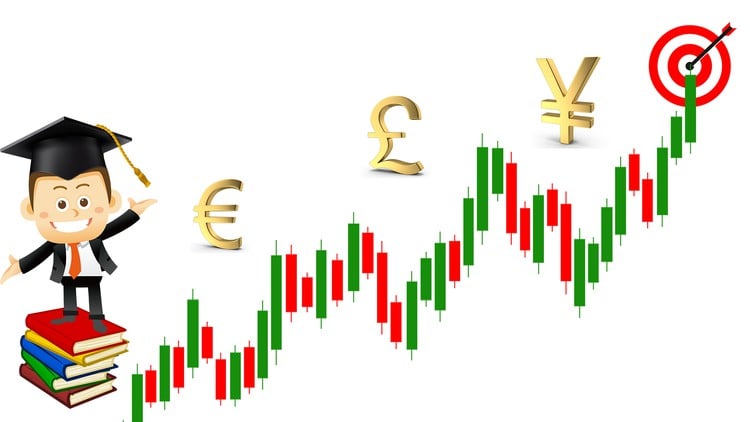Starting your Forex trading journey can be overwhelming, especially when you’re not sure where to turn for reliable, free resources. As a beginner, you may wonder if it’s possible to learn Forex without spending a dime. The good news is, absolutely! There are numerous high-quality resources available online for free that can help you grasp the basics, understand trading strategies, and even practice trading risk-free.
The problem is, while there are many paid options, most beginners feel lost amidst the vast amount of free content available. They wonder whether they can trust these resources and if they will actually help them make informed trading decisions. The solution lies in finding structured, comprehensive, and unbiased content—without the overwhelm.
In this guide, I’ll walk you through how to start learning Forex online for free, using tried-and-tested resources. From understanding the basics to practicing with demo accounts, I’ll cover everything you need to know to get started—without spending a penny.
- Understanding the Basics of Forex Trading
- Finding the Best Free Resources
- Choosing the Right Trading Platform for Beginners
- How to Practice Forex Trading Risk-Free
- Staying Consistent and Keeping Up with the Market
Whether you’re a complete beginner or looking to refine your skills, this guide will equip you with all the tools, strategies, and knowledge you need to start your Forex trading journey without paying for expensive courses or software. So, let’s dive in!
Introduction to Forex Trading
What is Forex Trading? Forex trading, also known as currency trading, involves buying and selling currencies in the global marketplace. Unlike the stock market, Forex operates 24 hours a day, making it a dynamic and fast-paced market. Whether you’re trading for fun or with the goal of making a profit, it’s essential to understand how the Forex market works. Think of it as the world’s largest financial market where currencies are traded against each other, such as the USD/EUR pair.
Why Learn Forex Trading? Trading Forex offers the opportunity to earn money by predicting the price movement of currency pairs. If done well, it can become a source of income, but like any skill, it takes time and effort to master. The beauty of learning Forex is that it’s accessible to anyone with an internet connection. Plus, with free resources, you don’t have to invest money upfront to start learning the ropes.
Can You Learn Forex Trading for Free? Absolutely! There are numerous free courses, tools, and platforms that help you understand the fundamentals of Forex trading. The key is to pick trustworthy resources that offer structured learning and hands-on practice.
Free Resources for Learning the Basics
eToro Forex Trading Course: eToro’s free Forex trading course provides an excellent starting point for beginners. It covers the essential concepts of Forex trading, risk management, and how to use the eToro platform. This course is especially great if you want to dive into social trading and get a feel for the market before putting your own money at risk.

FX Academy: FX Academy is another great option for beginners. Their free lessons cover everything from the basics of currency trading to more advanced strategies. The best part? They offer quizzes and interactive exercises to reinforce your learning, ensuring that you understand the concepts before moving on.

School of Pipsology by Babypips: Babypips has one of the most renowned free Forex courses available, called the School of Pipsology. It’s a structured curriculum that walks you through everything from understanding Forex fundamentals to more complex strategies, and it’s suitable for beginners. Plus, they make learning fun and easy to follow!

Step 1: Understand the Basics of Forex Trading
What Are Currency Pairs? In Forex, currencies are traded in pairs. The most popular pairs are the EUR/USD, USD/JPY, and GBP/USD. The first currency in the pair is known as the “base” currency, and the second is the “quote” currency. For example, if you are trading the EUR/USD, you are buying Euros and selling US dollars. When the price of the pair goes up, the base currency has become stronger compared to the quote currency.
Free Resources for Learning Currency Pairs
MetaTrader 4 and 5: These platforms are free to use, and they allow you to practice trading with virtual money. MetaTrader offers advanced charting tools and allows you to trade using real-time data. It’s one of the most popular platforms for beginners, as well as advanced traders.
Understanding Leverage and Margin: Leverage allows you to trade larger amounts of currency than you have in your account. It’s a double-edged sword though: while it can amplify profits, it also increases the potential for loss. For example, a leverage of 50:1 means you can control $50,000 worth of currency with just $1,000 of your own capital. It’s crucial to understand how leverage works before using it.
Step 2: Choose the Right Forex Trading Platform
MetaTrader 4 and 5: MetaTrader is the most widely used trading platform, offering advanced charting tools, market analysis, and automated trading capabilities. Most brokers offer a free demo account on MetaTrader, which is essential for beginners. This allows you to practice and refine your skills without risking any real money.
AvaTrade’s Free Trading App: AvaTrade offers a comprehensive platform for beginners, including free educational tools, demos, and real-time market data. Their free app provides all the essential tools to help you start trading from your phone. It’s a great platform to explore if you’re looking for a user-friendly and reliable broker.
TradingView: For charting and technical analysis, TradingView is another excellent free tool. It’s widely used by traders for its interactive charts and the ability to collaborate with others on trade setups. It’s especially helpful if you want to analyze market trends without opening a trading account right away.
Free Forex Trading Platforms for Beginners
MetaTrader 4/5 Demo Accounts: The first step in learning Forex is setting up a demo account on MetaTrader. This allows you to practice trading and testing your strategies with no financial risk.
Step 3: Practice Trading Strategies with Free Tools
What Is a Trading Strategy? A trading strategy is a plan to determine when to buy or sell based on a set of criteria. There are many strategies in Forex, such as technical analysis, fundamental analysis, or news-based trading. As a beginner, it’s important to start with simple strategies and build up your skills gradually.
Step 4: Develop a Forex Trading Plan
Why You Need a Trading Plan A Forex trading plan outlines your strategy, goals, and risk management rules. Without a plan, you’re essentially gambling. A well-thought-out plan can help you stay disciplined and make better trading decisions.
Key Elements of a Forex Trading Plan
Risk Management and Stop-Loss Strategies: It’s crucial to manage risk by setting stop-loss levels. This means automatically exiting a trade if the market moves against you by a certain amount. This protects your capital and minimizes the impact of a losing trade.
Setting Realistic Goals: Set achievable goals for your Forex trading journey. Start small and focus on learning rather than making huge profits right away. The more you trade, the more you’ll learn.
Step 5: Keep Learning and Improving Your Forex Skills
The Importance of Continuous Education The Forex market is constantly evolving, and successful traders are always learning. Even if you’re already proficient, keeping up with economic news, market trends, and new strategies is vital for staying ahead of the curve.
Continuous Learning Resources
Udemy Free Forex Courses: Platforms like Udemy offer free courses that dive deeper into specific trading strategies and concepts. Check for free courses or discounted ones to expand your knowledge.
YouTube Channels for Forex Tutorials: There are many YouTube channels that offer free tutorials and tips for Forex traders. Channels like “Trading 212” and “The Chart Guys” provide step-by-step guides on how to analyze the market and execute trades effectively.

Step 6: Master the Psychology of Forex Trading
Understanding Trading Psychology Trading psychology plays a huge role in your success as a Forex trader. It’s easy to get carried away by emotions, especially when faced with the excitement of the market or the stress of losses. Successful traders know how to keep their emotions in check and stick to their trading plan.
Why Psychology Matters in Forex Trading
Fear and Greed: Two of the most common emotions that influence traders are fear and greed. Fear can cause you to close out a position too early or avoid taking a trade altogether, while greed may lead you to hold a trade for too long in hopes of more profit. Understanding how to manage these emotions is key to consistent success.
Overcoming Emotional Trading: One way to combat emotional trading is by using well-defined stop-loss orders and maintaining a trading journal. By sticking to your plan and reviewing your trades, you can avoid making impulsive decisions driven by emotional reactions.
Step 7: Regularly Update Your Knowledge and Adapt to the Market
The Forex Market Is Always Changing The Forex market is highly dynamic and influenced by various factors like global events, economic reports, and market sentiment. As a beginner, it’s essential to stay informed and adjust your strategies accordingly. Even if you have a set plan, market conditions can change rapidly, requiring you to adapt your approach.
Staying Updated on Market News
Economic Calendar: A key tool for any Forex trader is the economic calendar, which lists important financial events like central bank meetings, employment reports, and GDP releases. These events can significantly affect currency prices, and knowing when they occur can help you plan your trades more effectively.
Forex Forums and Communities: Joining Forex trading communities such as the BabyPips forums or Reddit’s Forex threads can provide valuable insights into market trends and strategies. Engaging with others who share your interest will keep you motivated and help you learn from the experiences of more seasoned traders.
Step 8: Build Your Forex Trading Strategy Over Time
Start Simple and Build Complexity As a beginner, you don’t need a complicated strategy. Focus on mastering the basics first, then gradually build your strategy as you gain more experience. One popular approach is to combine technical and fundamental analysis, which will allow you to make more informed trading decisions.
Test, Learn, and Refine
Backtesting Your Strategy: Once you’ve decided on a strategy, backtest it using historical data. This can be done with platforms like MetaTrader 4 or TradingView, both of which offer backtesting features. This allows you to see how your strategy would have performed in the past, giving you a better idea of its potential effectiveness.
Paper Trading and Demo Accounts: Before trading with real money, practice your strategy with a demo account. This will help you build confidence and fine-tune your approach without risking your capital. Many brokers, such as IG and AvaTrade, offer free demo accounts for new traders to practice risk-free.
Step 9: Gradually Transition to Live Trading
Start Small Once you feel comfortable with your strategy and have practiced sufficiently, it’s time to transition to live trading. Start with a small amount of capital that you’re willing to lose and gradually increase your position sizes as you gain experience and confidence.
Live Trading vs. Demo Accounts
The Psychological Difference: Trading with real money can be a completely different experience than trading on a demo account. The emotional stakes are higher, and you’ll likely feel more pressure. It’s important to stick to your plan and not let emotions like fear or greed influence your decisions.
Managing Real Money and Risk
Risk Management Is Key: As you begin trading with real money, be sure to implement effective risk management strategies. Use stop-loss orders to protect yourself from significant losses and avoid over-leveraging your trades. Only risk a small percentage of your account balance on each trade to ensure longevity in the market.
Step 10: Continue to Evolve and Improve Your Forex Skills
Forex Trading Is a Continuous Learning Journey The most successful traders are those who never stop learning. Whether it’s attending webinars, reading books, or experimenting with new strategies, continuous improvement is the key to long-term success in Forex trading.
Learning from Mistakes
Failure Is Part of the Process No one wins every trade, and that’s okay! What’s important is learning from your mistakes and refining your approach. Keep a trading journal to track your trades, note what worked, and identify areas for improvement. Over time, you’ll develop your own trading style and become more consistent.
Forex Is a Skill, Not a Get-Rich-Quick Scheme Patience is essential. The more you practice, the better you’ll get. There will be ups and downs, but remember that even experienced traders face losses. The key is staying disciplined, continuously improving, and never losing sight of your long-term goals.
Epic Recap
We’ve covered the essential steps to start learning Forex online for free. You’ve learned about understanding the basics, using free platforms, developing a trading strategy, practicing with demo accounts, and the importance of continuous education. We also discussed the psychological aspects of trading and how to transition to live trading while managing risk effectively.
Forex trading is a skill you can learn without spending money upfront. With the right resources, practice, and mindset, you can start trading Forex risk-free and build a strong foundation for your future trading career. Keep learning, stay disciplined, and always adapt to the market.
The world of Forex is vast and dynamic, but with the right tools and dedication, anyone can start mastering it—free of charge. Keep practicing, and remember, success in Forex comes with time, patience, and continuous learning.
